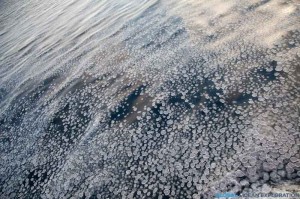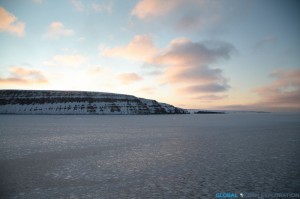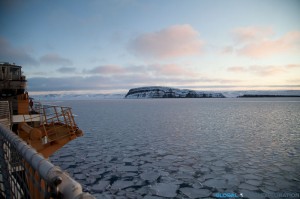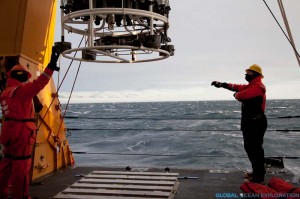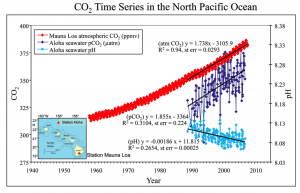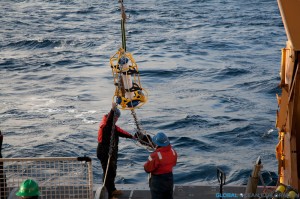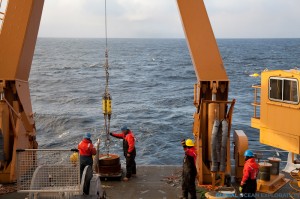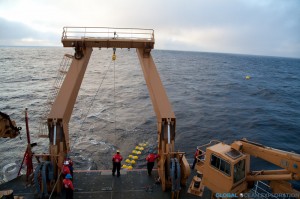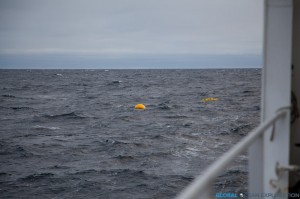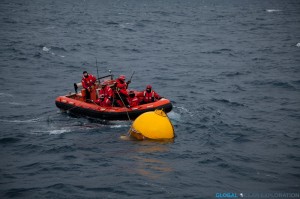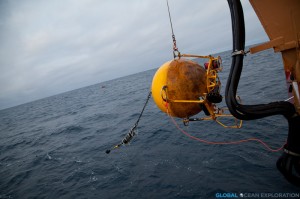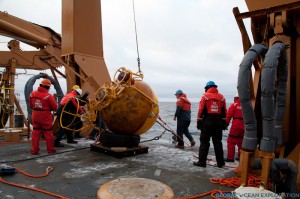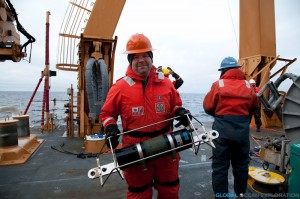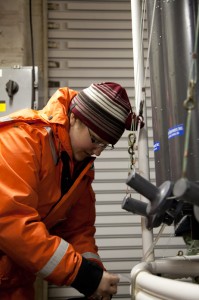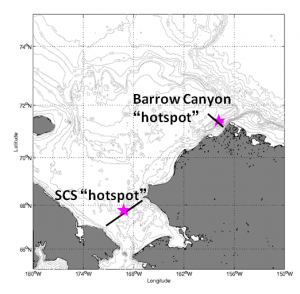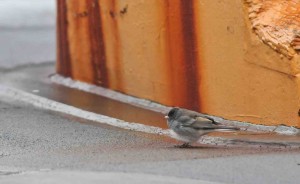The day started out much the same way as the day before ended, with us steaming. But within a few hours, we were beginning to see newly forming pancake ice! There is nothing on this earth that is as beautiful as sea ice and if I needed reaffirmation of that, I got it today as we steamed through endless pancake ice to our next station inside M’Clure Strait. As we approached Banks Island and the promontory that marked the opening to the Strait, the ice became a bit thicker and there was a quiet excitement to be sampling in this new and exciting area so far north.
Ice with Cape M’Clure in the distance
We continued around Cape M’Clure and into the Strait where we were going to sample, getting only 700 meters from shore for our first sampling station. The sun was shining and it has to be one of the most beautiful places I have ever been. With pancake ice forming before our eyes and yellow glowing cliffs, we watched the sun set over the cliff as we positioned the boat. Truly a magical spot and to think about how few people have been here and the explorers that came here so long ago blew my mind. Then it got dark and the moon was out and shining brightly, reflecting on the ice. Only one word can describe this place: stunning. Hard to put into words, but very special…as one person said, we are in a remote and special place…I couldn’t say it better…
Looking into the Strait: Cape Crozier
Out of the Strait: Cape M’Clure
Larger Pancake Ice as we headed to our sampling station
At our sampling station, only 700m from shore
The sun setting behind Banks Island
A beautiful Arctic night



